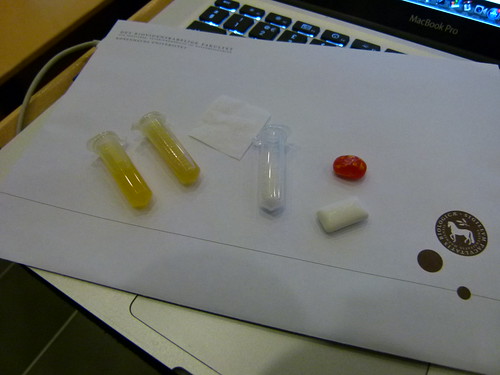As a part of Jannie and Michael’s presentation on myth busting in sensory science, audience members were presented with this tasting kit.
After having been instructed to chew the gum for several minutes, then remove it from the mouth, the piece of filter paper was placed on the very end of the tongue. This produced a distinct bitter sensation, disproving the theory of the ‘tongue map’, which argues that particular tastes or flavours are detected by particular parts of the tongue — the tip not usually associated with being able to detect bitterness.
The cinnamon jelly bean was to be eaten with the nose pinched firmly closed — while there was easily perceptible heat from the cinnamon, and sweetness from the sugar, it wasn’t until we stopped pinching our noses that a great waft of cinnamon aromatics was discernible, showing how important retronasal migration of molecules is in forming flavours of things we eat.
After 20 minutes or so, we were instructed to re-chew the chewing gum, and then to sprinkle it with some castor sugar, which gave the distinct impression of livening again the cherry flavour it originally had, though this was to some extent merely our sensory faculty’s preference for change over sameness that contributed to this effect.
The remaining vials contained passionfruit and sea buckthorn.
